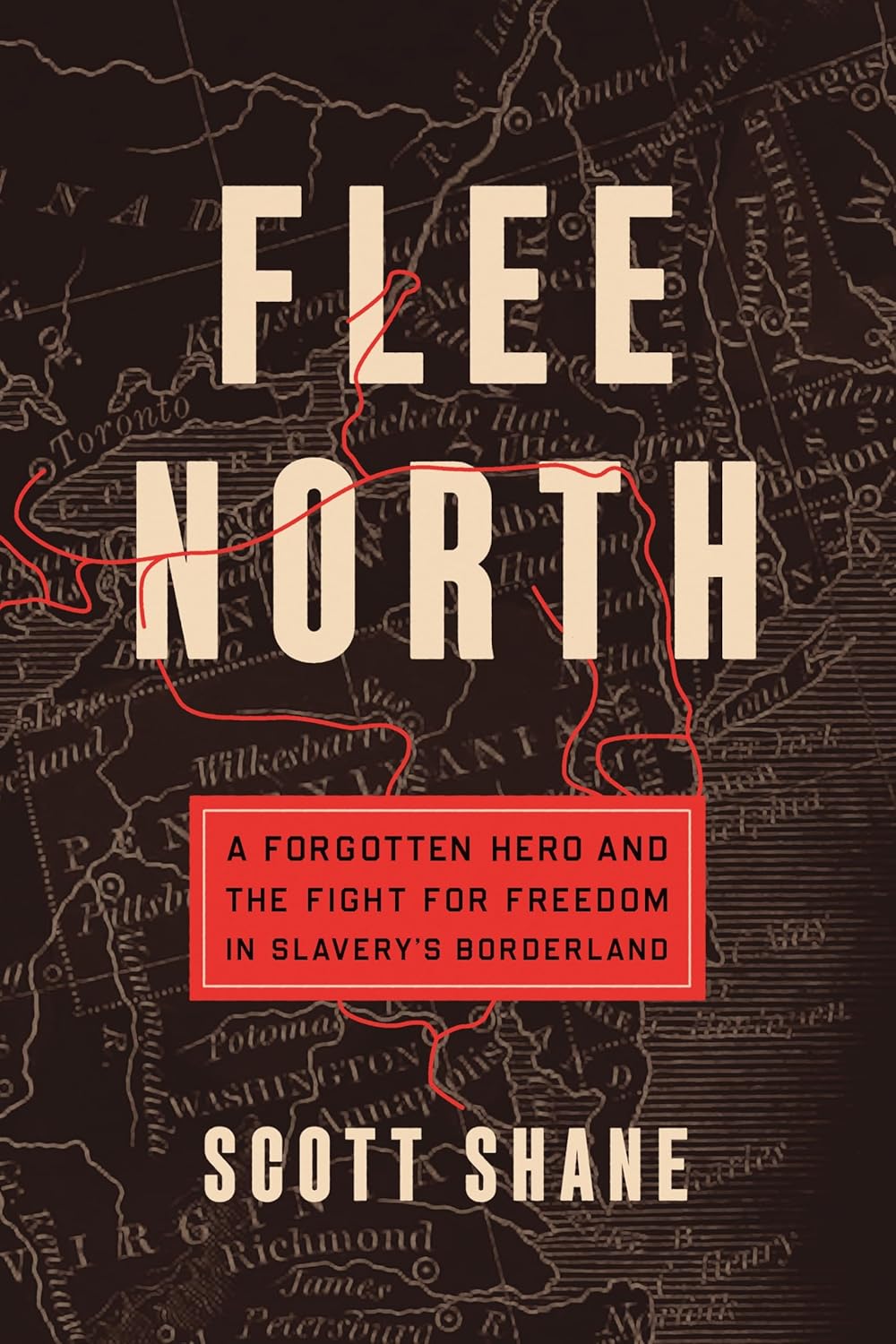Summary | Excerpt | Reviews | Beyond the Book | Read-Alikes | Genres & Themes | Author Bio

A Forgotten Hero and the Fight for Freedom in Slavery's Borderland
by Scott ShaneThis article relates to Flee North
 The nonfiction book Flee North recounts how activist and writer Thomas Smallwood encouraged the enslaved individuals he helped escape to relocate to Canada, where slavery was illegal, rather than remaining in the United States, where they might be returned to captivity if caught. Smallwood himself settled in Toronto with his family in 1843 after nearly being apprehended in Baltimore. Canada had only abolished slavery less than a decade before, and only at the behest of Great Britain, who ruled the country at the time.
The nonfiction book Flee North recounts how activist and writer Thomas Smallwood encouraged the enslaved individuals he helped escape to relocate to Canada, where slavery was illegal, rather than remaining in the United States, where they might be returned to captivity if caught. Smallwood himself settled in Toronto with his family in 1843 after nearly being apprehended in Baltimore. Canada had only abolished slavery less than a decade before, and only at the behest of Great Britain, who ruled the country at the time.
European colonial powers began the large-scale transport of enslaved people from Africa in the 16th century. While some of those affected were taken to Europe, most were shipped across the Atlantic in horrifying conditions to be put to work in the Caribbean or the Americas. It's estimated that until the practice was banned in the 19th century, more than twelve million African men, women, and children were subjected to forced relocation and enslavement, with approximately two million dying on the journey.
Canada was originally founded as the Colony of New France in 1534, though French settlement in the territory was slow. While slavery in France was abolished by King Louis X in 1315, it was allowed to continue in its colonies. Louis XIV specifically legalized this practice in 1685, and authorized the import of enslaved Black people to New France in 1689. In 1709, New France passed laws covering the treatment of those who were enslaved. While some basic protections were outlined – the enslaver was to provide food, shelter, and clothing – enslavers were also explicitly allowed to inflict physical punishment on those they enslaved, including branding, mutilation, and even death. As in the United States to the south, free Black people could be enslaved if they were unable to prove their status.
The British defeated France in the Seven Years' War, acquiring Canada in 1763 as a result. At the time, the majority of those enslaved in Canada were Indigenous people, with a minority being of African origin. However, the number of enslaved Black people in the territory grew after Great Britain acquired it, as loyalists fleeing growing anti-British sentiment in the United States brought their households with them, including their enslaved "property." Many formerly-enslaved Black individuals arrived during and after the Revolutionary War, as the British promised freedom and land to those who would fight for them against the American rebels. It's estimated that more than 3,000 free Black people settled in Nova Scotia from 1783-1785.
In the ensuing decades, anti-slavery sentiment began to rise in Great Britain, spurred in part by first-person accounts penned by people formerly enslaved and publicized by abolitionist newspapers. In 1807, Great Britain abolished the slave trade in all its territories, but that only meant that individuals were no longer purchased from Africa or traded overseas. Those already enslaved – and any children born to them – could continue to be bought and sold locally.
The abolitionist movement gained traction in Canada, and bills ending enslavement were presented to local governments, but none passed. Judges increasingly ruled against enslavers in court cases, however; those claiming an individual was a runaway slave had to appear in court and prove their "ownership" of the specific person in question, and often they couldn't. Those enslaved increasingly self-emancipated, hoping the courts would back them, and slavery gradually became economically unviable. It's believed less that fifty people remained in bondage in Canada by 1818.
Great Britain abolished slavery entirely in 1834, and, as a result, the practice was legally ended in Canada as well. That made it an attractive destination for those fleeing slavery in the United States. The migration increased after the passage of the Fugitive Slave Act of 1850, which forced those who'd escaped to free states to return to their enslavers if caught and punished anyone helping them; it's thought 15,000-20,000 African Americans fled to Canada in the ensuing decade. The number of Black residents in Canada decreased after the American Civil War ended, as many returned to their homes.
Although Black people were no longer subject to slavery in Canada, they did experience constant racism. They faced discrimination in housing, business, and education with no legal recourse until laws passed in the 1950s and 1960s mandated some level of equality. And, as with the United States, Great Britain, and other countries around the globe, racism continues to be a concern, and the struggle for equity continues.
A copy of King Louis XIV's 1685 edict, which formed the basis for legalized trade of enslaved people in France's colonies. Paris: Claude Girard, 1735. Photo by Ambre Troizat, January 16, 2016. (CC BY SA-4.0)
Filed under People, Eras & Events
![]() This "beyond the book article" relates to Flee North. It originally ran in October 2023 and has been updated for the
December 2024 paperback edition.
Go to magazine.
This "beyond the book article" relates to Flee North. It originally ran in October 2023 and has been updated for the
December 2024 paperback edition.
Go to magazine.
Your guide toexceptional books
BookBrowse seeks out and recommends the best in contemporary fiction and nonfiction—books that not only engage and entertain but also deepen our understanding of ourselves and the world around us.